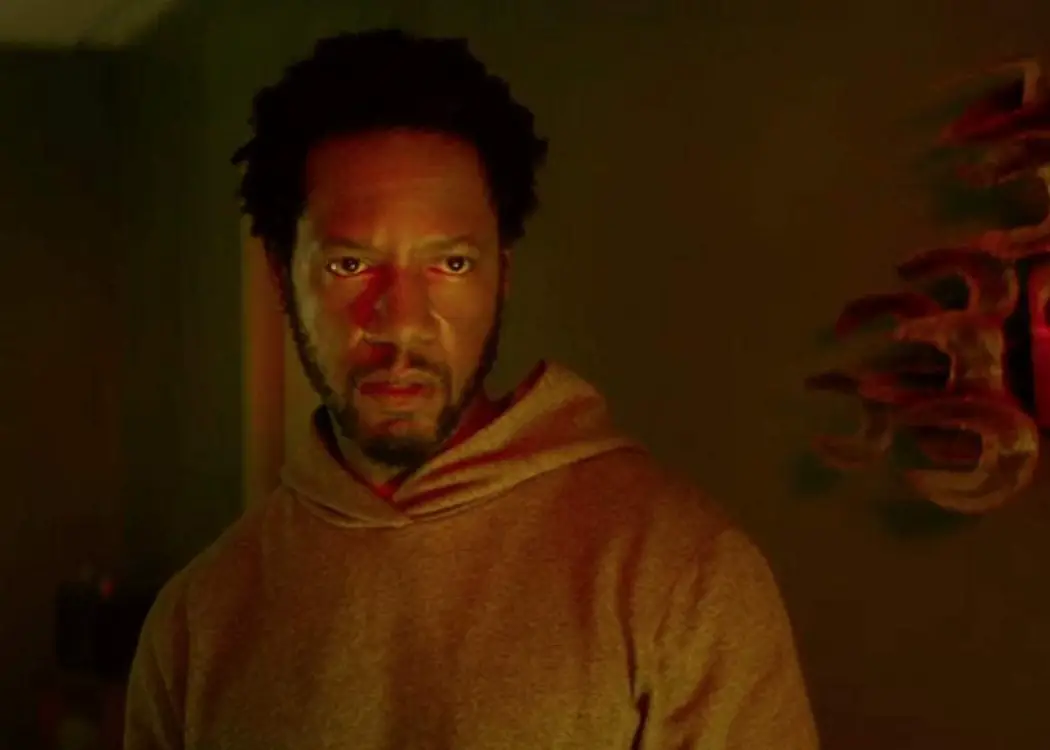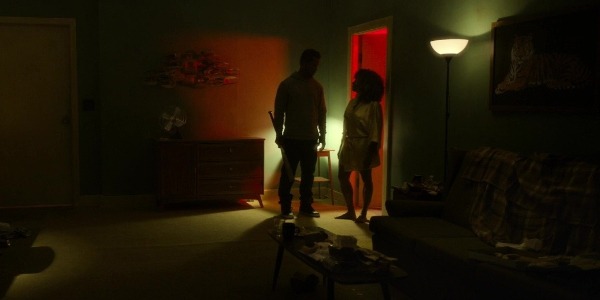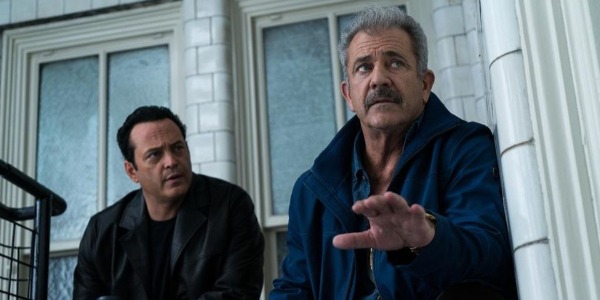Interview With Tory Kittles, Star Of DRAGGED ACROSS CONCRETE

Alex is a 28 year-old West Australian who has a…
No matter where you were, you could hear the notable wince that spread across the internet when the title, premise and cast was announced for S. Craig Zahler’s third feature; Dragged Across Concrete, starring Mel Gibson and Vince Vaughn as a pair of crooked cops. The author-turned director managed to make a name for himself in 2015 with Bone Tomahawk, a grisly Western that, much like one member of its mustachioed cast, split audiences – the dialogue driven, languidly paced drama was punctured by moments of genuinely shocking brutality frustrated some, whilst others appreciated its bold mixing of the horror and Western genres.
No matter what side of the line you fell on, it was definitely a film that had people talking. His swift follow-up was no different; Brawl in Cell Block 99 was just punchy as its title, featuring the bruised knuckles of a bald Vince Vaughn being dug into those who stand in his way of saving his kidnapped wife within the titular prison cell. Zahler’s predilection for gruesome violence within genre-inflicted slow burn dramas owed equally to Sidney Lumet and Ruggero Deodato’s Italian cannibal pictures – both stemming from the 1970’s. It’s this retro flavour that has earned Zahler’s polarising work easy comparisons to Tarantino – both wear their grindhouse influences on their sleeves and their way with words is a work of magic – but Dragged Across Concrete is an entirely different beast; a dramatic potboiler that really lets the pot boil before the eventual burst.
When a pair of police partners (Mel Gibson and Vince Vaughn) are caught on camera being too rough with a drug-dealing suspect, they are both suspended without pay. Desperate to provide for their respective families during their down-time, they decide to hijack a heist that’s being methodically cobbled together by German psychopath Lorentz Vogelmann (Thomas Kretschmann). The plan includes recently-paroled ex-con Henry Johns (Tory Kittles) and his childhood best friend Biscuit (Michael Jai White), who like the leading cops, are only indulging in the caper to provide for their own suffering families.
Dragged Across Concrete is truly one of the year’s best films, and for those sick of the CGI-infused blockbusters that are stuffing cinemas nowadays, Zahler’s third film reminds us of the morally complex, clever type of crime thrillers that used to be considered mainstream sensations back in the 70’s. It’s filled with career-best performances from its loaded cast (exploitation king Udo Kier even gets his own scene), and those intimidated by its hefty runtime will find themselves enveloped by the drama within its whip-smart opening scene alone.
In the lead-up towards Dragged Across Concrete’s Australian theatrical release on August 29th, I had the chance to speak with Tory Kittles about his terrific performance in the film, working with Zahler, his approach to the character of Henry Johns and his upcoming role in Kasi Lemmons’ Harriet biopic.
Warning: This interview contains spoilers for Dragged Across Concrete.
Alex Lines for Film Inquiry: Can you tell us what initially drew you to the character of Henry Johns?
Tory Kittles: For me, everything always starts with the writing. My first thought, truly, when I read it and got to the ending was “No way”. I was like, no way, no way, no way. I remember going, wait a minute, who’s in this movie? It has Vince Vaughn and Mel – and Henry Johns’ going to be the main person? Wow.
But then I couldn’t audition, they were in Los Angeles and he was seeing some of the great talent around Los Angeles. I wasn’t available because I was doing Richard II at the Old Globe and there was no way I could miss a show to have a meeting. Then Vince, who I’ve known for some years, lobbied Zahler on my behalf, he was like, you’ve got to take a look at this guy, he’s a buddy of mine.
So then Zahler was like, oh, I know him, I know him from this and that. He was very familiar with me, so he said, I’ll get on the phone with him and so we got on the phone, I read the script in one sitting and we talked for about 30, 40 minutes and I said to him, I know this guy. I know how to do this for you and I can do this well. He said, okay, I’m going to offer it to you and he did.
It was one of those things that you can’t plan as an artist – a lot of my career is going okay, that’s a great role, it’s out there, let’s pursue that, let’s go for that. But sometimes the best things just sort of happen to you because of the other work that you’re doing. To me when that happens, it’s rare and special, so this is one of those times.

In terms of a director, how was S. Craig Zahler like to work with on-set, is there a different rhythm to that you have to adjust to as a performer?
Tory Kittles: I think the script is always my way in. I knew what he wanted just from the way he wrote the part. So when we would get to set, it was just minor adjustments here or there, but we were pretty in sync the whole way shooting. He’s very calm and he knows what he wants and if he doesn’t get it we’ll just keep doing it until he gets what he wants.
We were really in sync and it was a tough shoot because it wasn’t a huge budget so the resources were limited. We were shooting nights for two or three weeks in the cold, so there were some obstacles there. I feel like we were all in sync creatively, with Zahler, Vince, Mel and Michael you know, everyone, we were all on the same page, because we fell in love with the script. When you do that you go, okay, so what do we need to make this the best possible picture we can make? So it was all gravy, or as Henry John would say, it’s all cotton candy.
I feel like it must be difficult to make his dialogue sound natural. What was your approach to his written material – especially with the way he writes his screenplays?
Tory Kittles: Well, for me, I was coming off of doing Shakespeare, like literally closed Richard II on a Saturday, got on a plane on Sunday to Vancouver and we were rehearsing with Mel and Zahler and I on Monday. There was an openness that always comes with being on stage and after that you can morph into anything. I think as actors, a lot of what we do is shape shifting, so for me, when I picked it up and read it the first time, I knew exactly what the rhythms were.
Not to be too technical, but from a physical standpoint, I was in the right artistic shape to be able to do what he needed. And you’re right, he does write in a very specific rhythm. He has his own rhythm, his own tone. It’s very descriptive. But that’s not a challenge to me, It wasn’t a challenge, It was just an enjoyment to be able to say it the way he wrote it.
One of the best parts of your performance in this film is your ability to sell your palpable intensity in scenes when your character is locked in a situation – especially in the van post-heist. As an actor, do you find these type of scenes – the quiet moments – harder than your traditional dialogue exchanges?
Tory Kittles: Not when the dialogue has pushed you to that place. Like if the script and the narrative has placed you in that situation, then you automatically know what’s called for. I love those quiet moments where everything has gone up, where now the stakes have been risen. You have to just play it all out. But I think it’s just about placing yourself in this situation and thinking about what has just happened and what we are dealing with and how are we going to get out of it.
And for Henry Johns, he was always a few steps ahead. Even in that scene in the van where they’re riding out after the heist, he’s ahead of them, you know? And that’s what I loved about Henry, was that he was always ahead of them. He actually had a plan and the fact that they weren’t paying attention to it based on what he was saying or how he looked or how he dressed, those things actually worked out in his benefit.
One of the great lines to me in the picture is when Ridgeman [Mel Gibson’s character] says, “You’re a whole lot smarter than what you sound, a whole lot smarter than from what I’ve seen”. That to me, sums up what Henry was and what he’s been doing and when Ridgeman realizes that, it scares him, he’s like, I’ve been missing this, I haven’t been paying attention. Then he panics and he makes a fatal mistake and that’s just great writing.

With Zahler’s visual sense of spatial awareness – for example, how vast and empty the major meeting between the cops and robbers is – how does it compare to acting on the stage?
Tory Kittles: Well I think acting on the stage is very different because you know that there is no cut. There is no do-over, the minute the curtain goes up, you have to live in it and if you miss something, you just have to keep going and stay in that moment until either an intermission or until play is over. It’s an exciting thing, because mistakes may be made but you still have to continue on and it keeps you alive as an artist and just on your toes, it makes you a really great listener.
And I think with film acting, most great film actors are great listeners, and I think the stage helps with that. I think anytime you’re doing any type of other performance, outside the medium of TV or film, especially stage, it just trains you to be a better performer, to be a better actor. But I do think that they’re very different. There’s the immediacy of theatre where it changes every night, where you know, something you did on Monday may not work on Thursday and so you’re sort of learning on your feet.
Whereas with cinema, there’s a whole process that after you shot it, you’re waiting for months, six, seven months before you even see the work before you even see it all cut together. Some things that you thought may have been great, may not even be there, like they may not make the cut. But in this particular case with Dragged Across Concrete, Zahler wrote a script, we shot the script and everything you see is what he wrote.
This is quite the brutal film, for both the audience watching and the characters within. For you, what would you say the hardest scene to shoot was?
Tory Kittles: The hardest thing probably would have been the opening scene where I’m naked because I’d never done it before. First time that I’ve completely done that and the actress that I worked with, it was her first time too, so we actually had a commonality, and we talked about it and worked it out. But it’s not every day that you have random people staring at your ass. I was kind of terrified, but then I thought, there’s nothing that women haven’t been doing for years, so then once I had that thought, I was like, okay, let’s just shoot. Everything else was just a joy to shoot. I wasn’t seeing things that were extremely hard for me, because I really fell in love with the script.
And when I can do that as an artist – fall in love with a particular character, then it’s there, it’s really on the page, then my job is to get out of the way. Like, don’t let your ego get in the way. Just service the story, just service the story. Because if you believe in something when you read it, then it’s always making sure that you get back to that first instinct that had when you read it. Clearing out all of the other things that come along with that after you thought about it, you know? The first instinct, the first impression of a character in a script is always best.
Especially in the second half, you share a number of scenes with Mel Gibson. How was he as a collaborator?
Tory Kittles: Great listener. Open. Raw. No bullshit. I appreciate the time because he was very giving and we talked a lot about a lot of things, you know, in the end I had a new understanding of him and I appreciated that he gave me that.
This is quite the spoiler-riddled question, but what was your personal interpretation of your character’s final line in the film? [Let’s some hunt some lions]
Tory Kittles: To me thematically, it lines up with everything that he’s done, the whole picture. It was chess for him. He was a few steps ahead of everybody – they look at you, how you look, how you talk, they expect one thing, so they will never see you coming. That to me is the way Henry was positioned in the story, is that they never saw him coming. So when he’s saying “Let’s go hunt some lions”, you know, I think that’s his next venture.

With the first trailer dropping this week, can you talk about your upcoming role in Kasi Lemmons’ Harriet?
Tory Kittles: Yeah, I had the great honour to play Frederick Douglas. It’s one of those epic films where you get to see Harriet Tubman’s story being told, It’s never been told before. I haven’t seen the picture yet, but I’ve been hearing great things about it. I just remember working with Cynthia Erivo and Leslie Odom Jr and when we were seeing the dailies, I just thought, man, she is incredible, so I can’t wait to see her performance in totality.
I watched Kasi Lemmons’ Eve’s Bayou this week actually, and it really is a great film.
Tory Kittles: Oh yeah, It’s a great one. You know, I think she’s one of the top directors in the biz. She’s a great communicator, she knows what she wants. Like all great directors, they know what they want in the scene and they’re editing it in their heads. They know the moments that they’re leading you to and the ones that they want you to discover. Hopefully I get to work with her again. She was fantastic.
Film Inquiry thanks Tory Kittles for taking the time to talk with us.
Watch Dragged Across Concrete
Does content like this matter to you?
Become a Member and support film journalism. Unlock access to all of Film Inquiry`s great articles. Join a community of like-minded readers who are passionate about cinema - get access to our private members Network, give back to independent filmmakers, and more.













